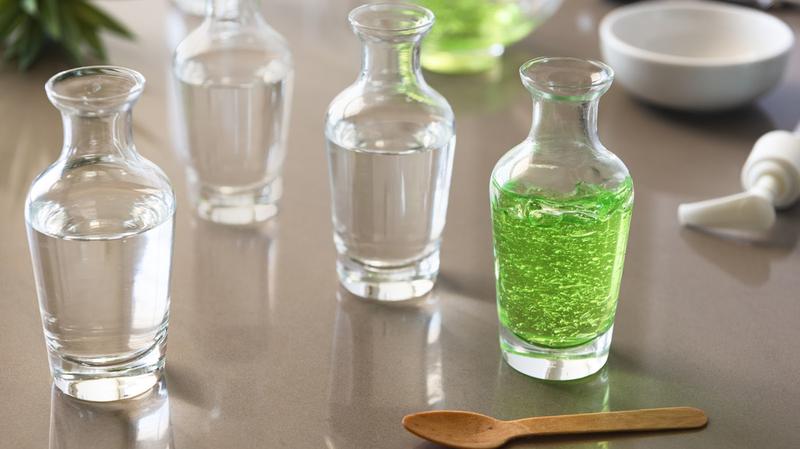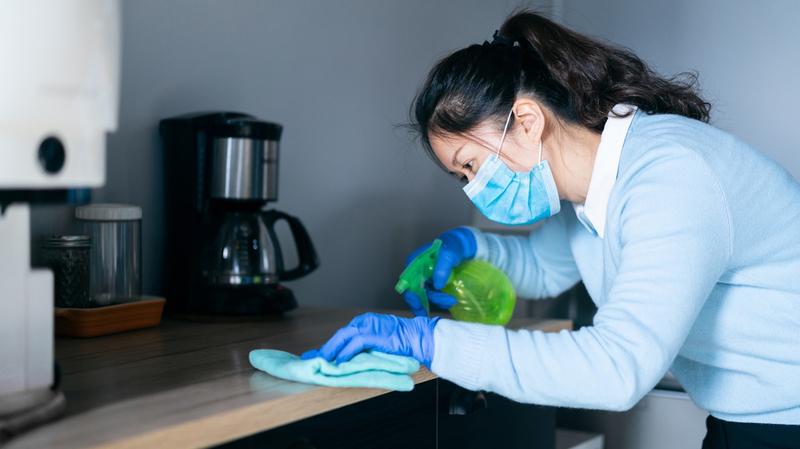
When you need to kill bacteria and germs, it’s hard to beat a good scrubbing with soap and water, but when those items aren’t available, a strong, alcohol-based hand sanitizer is an acceptable alternative. When the COVID-19 pandemic struck the United States in 2020, stores quickly sold out of all the different types of hand sanitizer.
With the Centers for Disease Control and Prevention (CDC) recommending regular handwashing and hand sanitizing, many people turned to alternative homemade “recipes” to make their own hand sanitizers. To be effective, hand sanitizer has to meet certain antibacterial criteria, but it also needs to be safe. Can you make hand sanitizer at home that’s similar to Purell and meets all these requirements? Let’s find out!
Consider the Wisdom of the CDC
The first important point to consider when you’re thinking about making your own hand sanitizer isn’t whether you can make it but whether you should. When it comes to guiding the country through an infectious pandemic, the CDC is a reliable source of wisdom and information. Officially, the organization isn’t responsible for regulating the production of commercial hand sanitizer.

However, the experts at the CDC don’t recommend “producing, using or selling homemade hand sanitizer products.” One key problem is the high risk of using the necessary ingredients incorrectly. The FDA agrees, noting that poorly made hand sanitizers could be potentially dangerous substances that cause poisoning or burns or just be ineffective and leave users susceptible to germs. Additionally, you can’t create a product capable of sterilizing without creating it in sterile conditions, and it’s not easy to achieve that in a home environment.
Due to the ongoing shortage of commercial products, the World Health Organization (WHO) issued guidance for the creation of hand sanitizers, but the recommended formulations are intended for non-traditional — although commercial — manufacturers like pharmacies and distillers, not for individuals at home. However, if you choose to ignore the recommendations of the CDC and FDA and make your own hand sanitizer, closely following WHO’s guidelines is one option, but aloe vera products are a more popular choice.
Gather the Basic Ingredients Needed to Make Hand Sanitizer
If you decide to proceed with making your own hand sanitizer, your goal is to create a final product that is at least 60% alcohol to effectively kill germs, but you also want it to be as gentle as possible on your skin and smell nice. To achieve these characteristics, you need three basic ingredients to make a gel-based hand sanitizer: alcohol, aloe vera gel and essential oil. You will also need a small squeeze bottle or spray bottle to store the hand sanitizer, a mixing bowl and spoon, and a funnel for easy pouring.

Because the active ingredient in hand sanitizer is alcohol, you may want to avoid using any hand sanitizer — particularly unregulated homemade versions — on young children’s skin to avoid the risk of irritation. Even when you’re confident about the proper ratio of alcohol to aloe vera, it’s better to put safety first.
Pay Close Attention to the Alcohol-to-Aloe Vera Ratio
Aloe vera and alcohol-based homemade hand sanitizers use a 2:1 ratio of alcohol to aloe vera, with a standard recipe consisting of 2/3 cup isopropyl alcohol and 1/3 cup aloe vera. That means you need to use a minimum 91% rubbing alcohol — not the standard 70% alcohol usually kept in medicine cabinets and first aid kits — to maintain an overall strength of at least 60% after diluting the alcohol with aloe vera. You could also use 99% alcohol for an even stronger product.

If you plan to use grain alcohol from a liquor store, keep in mind that at 190 proof, these spirits only equate to 80% alcohol. If you dilute 2:1, the final product will fall short of the 60% alcohol mark. If you reduce the amount of aloe vera to create a stronger blend, it could be more corrosive to skin, but if you don’t, the gel might not be effective. For the best results, stick to using rubbing alcohol instead of pure grain alcohol when making homemade hand sanitizer. Note: Regular spirits are not effective at all at killing germs.
Blend the Hand Sanitizer
Before you start making your homemade hand sanitizer, you need to clean and sterilize your work area as much as possible. Wipe down countertops with disinfectants, thoroughly wash your hands and put on protective gloves. Place your mixing bowl on the clean surface and mix two parts alcohol to one part aloe vera in whatever quantities you prefer. The metal or wooden spoon you use should be sanitized prior to use as well. Add about 8-10 drops of your favorite essential oil for every cup of sanitizer you make, and then use the funnel to pour the gel into a clean bottle that will only be used for hand sanitizer.

Keep in mind that alcohol can irritate the skin, so be careful not to mix too much alcohol into the formula. In a pinch, you can also spray alcohol alone on the skin to kill germs quickly, but it could irritate sensitive skin. Don’t forget that the CDC recommends regular handwashing over hand sanitizer use for killing germs, but hand sanitizer use is an acceptable alternative when regular soap and water aren’t available.
Sources:
https://www.cdc.gov/handwashing/hand-sanitizer-use.html
https://www.fda.gov/consumers/consumer-updates/safely-using-hand-sanitizer
https://www.cdc.gov/handwashing/faqs.html#hand-sanitizer-and-wipes
https://www.fda.gov/drugs/information-drug-class/qa-consumers-hand-sanitizers-and-covid-19
https://www.cbsnews.com/news/hand-sanitizer-coronavirus-make-your-own/





